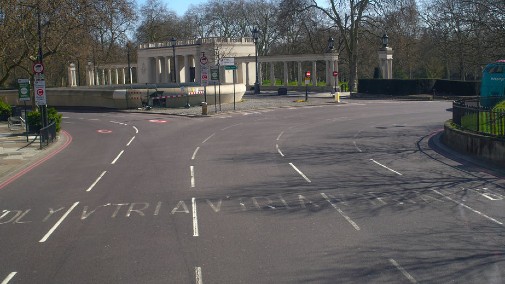Less traffic in first lockdown reduced air pollution but caused potentially damaging surface ozone levels to rise
Posted on 18 December 2020
 London saw increases of around 50% in surface ozone (O3) compared to previous years
London saw increases of around 50% in surface ozone (O3) compared to previous years
The study – led by the University of York – shows levels of nitrogen dioxide (NO2) down on average across the UK by 42 per cent, but surface ozone (O3) increased by 11 per cent on average.
Surface, or ground-level ozone, can trigger a variety of health problems, particularly for children, the elderly, and people of all ages who have lung diseases such as asthma.
Vehicle emissions
Scientists believe our warm and sunny spring weather may have been a contributing factor.
The report concludes that if the Covid-19 lockdown is taken as an example of how air quality will respond to future reductions in vehicle emissions - with more electric vehicles being introduced - it serves as a warning that the problem of O3 must also be considered.
Professor James Lee from the Department of Chemistry and the National Centre for Atmospheric Science said during the first lockdown levels of O3 were the worst in the South of England.
Professor Lee added: “The problem is being created by the change in chemistry between NOx (nitrogen oxide) and O3. The main reason is the change in the nitrogen dioxide levels but the warm sunny weather in April and May also increased the ozone level. As a result we found UV radiation across the UK was higher in 2020 compared to previous years, with the largest increases in southern England.
“London, Chilton in Oxfordshire and Camborne in Cambridgeshire saw increases of around 50 per cent compared to previous years, with Glasgow and Inverness showing smaller increases of around 30 per cent.
“These results are a cautionary tale. As well as looking at how we reduce levels of nitrogen dioxide by cutting diesel and petrol emissions, we also need to keep an eye on what is happening with ozone so we don’t create other forms of pollution dangerous to human health.”
Reduction
The report says in China nitrogen oxide reductions have also led to increases in O3 and air quality abatement strategies are being developed in order to offset the problem. This can be achieved by controlling volatile organic compounds (VOCs) - which are gases emitted into the air from products or processes of industry and other man-made activity.
Professor Lee added: “Our research shows it will be vital to control man-made VOCs to avoid any health gains made by the reduction of NO2 being offset by O3 increases.”
Data was collected from 175 Automatic Urban and Rural Network (AURN) traffic monitoring sites across the UK between 23rd March and 31st May 2020 and compared with figures from the previous five years.
Explore more news

New butterfly species created 200,000 years ago by two species interbreeding
Thursday 18 April 2024

Children in the North at greater risk of entering care
Wednesday 17 April 2024

Boreal forest and tundra regions worst hit over next 500 years of climate change, study shows
Monday 8 April 2024

Researchers developing ultra-sensitive blood test with potential to revolutionise diagnosis of Alzheimer’s
Thursday 4 April 2024

Attitudes to being an adult are shifting as traditional milestones become out of reach, new study finds
Wednesday 27 March 2024
Media enquiries
About this research
The study, “UK surface NO2 levels dropped by 42 % during the COVID-19 lockdown: impact on surface O3” is published in the journal, Atmospheric Chemistry and Physics.
Explore more of our research.
Our response to the coronavirus pandemic
We're working with partners in York and further afield as part of a global effort to fight the COVID-19 virus. From covid analysis in the labs to producing face shields for the frontline, we're using our knowledge and expertise to support the effort.
